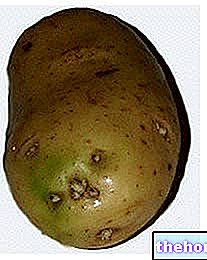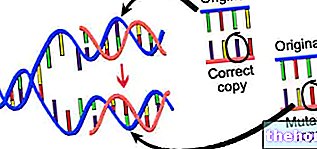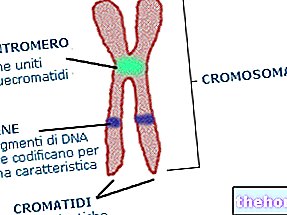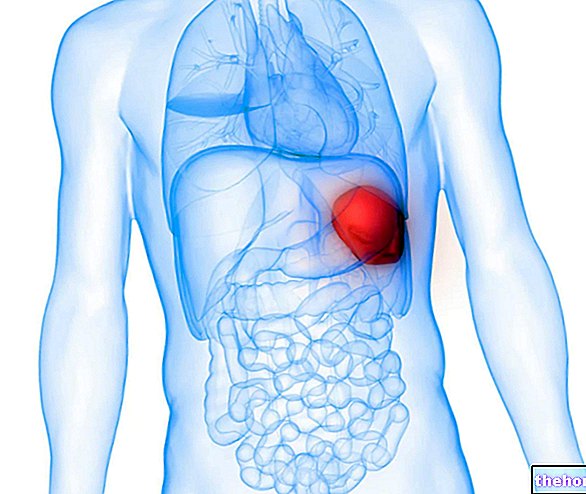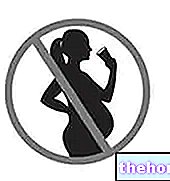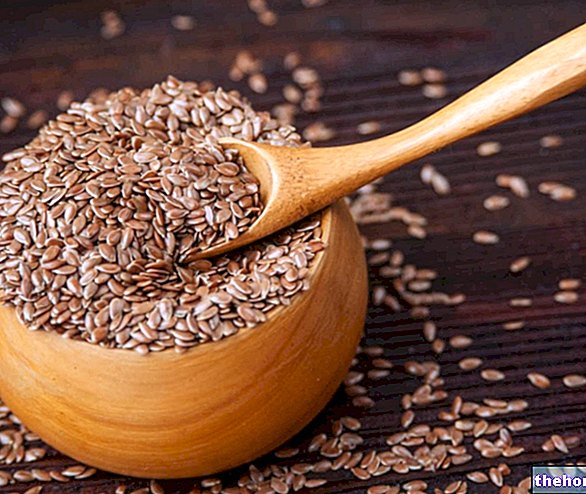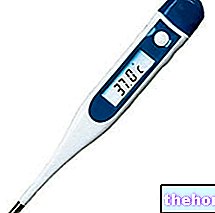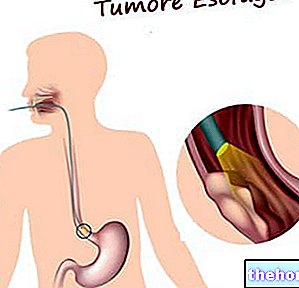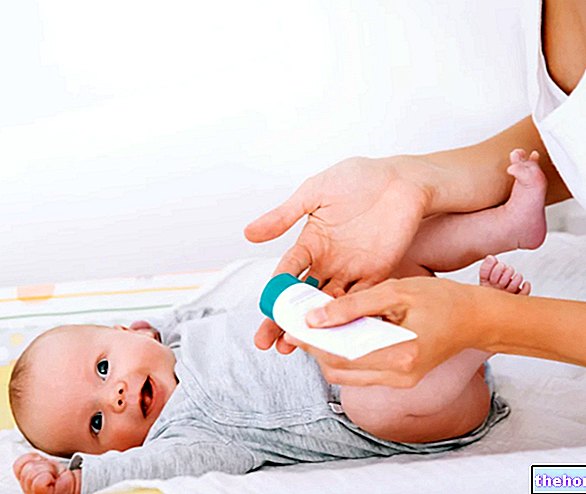Previously we talked about mutations that occur on the basis of DNA; now we focus on the mutations that occur at the chromosome level, therefore much more serious alterations than those seen before.
What are chromosomes? This term defines the coils and the various compact folds of the DNA molecules inside the cell nucleus. The chromosomes can be seen with the optical microscope only before or during cell division.

This preface on chromosomes serves to better understand the mutations that can occur at the chromosomal level. The mutations that can occur are mainly two:
- CHANGE IN THE NUMBER OF CHROMOSOMES;
- MODIFICATION OF THE STRUCTURE OF CHROMOSOMES OR ABERRATIONS (breakage and rearrangement).
Change in the number of chromosomes
It can happen that cells are formed that have few more chromosomes, or few fewer chromosomes than the parent cell. In this case we speak of the ANEUPLOIDY of the cells.
EXAMPLES OF ANEUPLOIDY OF AUTOSOMES
SYNDROME
KARYOTYPE
ALTERATIONS
Down syndrome
47 chromosomes (+1 on chromosome 21)
Mental retardation, short stature, macroglossia or large tongue, protruding ears, large neck, impaired immune system, cardiovascular and renal systems with frequent malformations, anomalies in the palmar folds, etc.
Plateau syndrome
47 chromosomes (+1 on chromosome 13)
Eyes, ears and internal organs are malformed. Cleft lip with or without cleft palate. A few months of survival.
Edwards syndrome
47 chromosomes (+1 on chromosome 18)
Malformation of the skull and viscera. A few months of survival.
EXAMPLES OF ANEUPLOIDY OF HETEROCHROMOSOMES
MALE KARYOTYPE
FEMALE KARYOTYPE
KARYOTYPE OF THE PRODUCT OF CONCEPTION
SYNDROME
23, X
22, 0
45, Y0
Turner syndrome.
22, 0
23, X
45, X0
Turner syndrome.
23, Y
24, XX
47, XXY
Klinefelter syndrome.
23, X
24, XX
47, XXX
Triple X syndrome
23, Y
22, 0
45, Y
Product incompatible with life
There are also cells that have a multiple karyotype, so these cells contain multiples of the entire series of chromosomes. In this case we speak of POLYPLOID cells.
Changes in the structure of chromosomes or aberrations (breakage and rearrangement)
The second possible alteration at the chromosome level consists in a break and rearrangement of the genetic material. Chromosomal rearrangements can be of two types. The first can be of the balanced type, so there is no loss and no addition of chromosomal material. The second can be unbalanced, so the total amount of genetic material of the chromosome is changed.
Alterations at the level of only one chromosome we can have:
- DELETION: cancellation of a part of chromosomal material;
- DEFICIENCY: loss of a very small part of chromosome;
- DUPLICATION: a piece of chromosome is repeated;
- INVERSION: the fragment obtained from two fragmentations rotates 180 degrees and is inserted between the other two fragments, thus reconstructing the chromosome morphologically but with a modified gene sequence.
The alterations at the level of several chromosomes are:
- SIMPLE TRANSLOCATION: on the chromosome a different fragment is inserted that has detached from the chromosome to which it belongs;
- DOUBLE TRANSLOCATION: exchange of chromosomal fragments between two non-homologous chromosomes;
- MULTIPLE TRANSLOCATION: transfer of several fragments between several chromosomes;
- INSERTION: following the fragmentation of three chromosomes, the exchange of pieces between non-homologous chromosomes takes place.
MAIN SYNDROMES DUE TO STRUCTURAL MUTATIONS OF CHROMOSOMES
SYNDROME
ABERRATION
PHENOTYPICAL FEATURES
Syndrome of the "cri du chat" or the cry of the cat.
Deletion of the short arm of chromosome number 5.
Malformations of the ears, face and larynx, microcephaly.
Angelman syndrome
Deletion of the long arm of chromosome number 15. In some cases there is the presence of two chromosomes 15 both coming from the father.
Ataxia, tremors, difficulty in sucking, swallowing, intestinal motility, seizures, strabismus, microcephaly and vulnerability to infections.
Prader-Willi syndrome
Deletion of part of the long arm of chromosome number 15 of paternal origin. Presence of two chromosomes 15 of maternal origin.
Delayed growth, muscular hypotonia, bulimia, reduced psychic development.
George syndrome
Deletion of part of the long arm of chromosome number 22.
Cleft palate, facial, thymus, parathyroid changes, cardiac malformation and immunodeficiencies.
Williams syndrome
Deletion of part of the long arm of chromosome number 7.
Delayed development, cardiovascular malformations, mental retardation.
If these mutations occur inside somatic cells they will produce neoplasms (tumors); if, on the other hand, the mutations affect germ cells they can cause the serious consequences that have been seen previously.
Mutations within somatic cells can be silent, and in this case they do not cause modified products, but also be incompatible with the survival of the cell. From a certain point of view, cell death would be the best solution, because that would be the case. to eliminate the possible mutation that has occurred and above all it would avoid the transmission of the error to the daughter cells. If the mutation has altered the gene products that affect the cellular differentiation and proliferation capacity, this type of mutation is inherited by the cells daughters; consequently it prepares the cell to be a tumor type cell.
Other articles on "Chromosomes and chromosomal mutations"
- Mutagenesis and mutations
- Toxicity and toxicology
- Carcinogenesis




